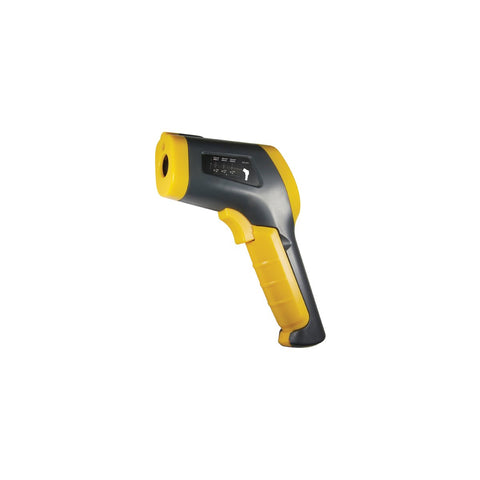Infrared (IR) thermometers measure surface temperature by detecting infrared radiation emitted by an object. Every object with a temperature above absolute zero emits infrared energy, and the thermometer uses a sensor (usually with a laser pointer) to collect and convert this energy into a temperature reading—instantly and without physical contact.
Key features:
- Non-contact: Ideal for scanning hot surfaces, moving items, or hard-to-reach areas.
- Fast readings: Delivers temperatures in seconds.
- Laser targeting: Helps you aim at a specific spot for more accurate results.
- Emissivity setting: Some models allow adjustment based on the type of surface (e.g., shiny metal vs. matte food).
Can I Use an Infrared Thermometer in Food Service in Australia?
Yes—but with important limitations.
Infrared thermometers can be used in food service in Australia, but only for measuring surface temperatures, not internal (core) temperatures. This distinction is critical for meeting food safety standards set by FSANZ and local councils.
Appropriate uses in food service:
- Receiving deliveries: Quickly check surface temp of refrigerated goods (e.g., cartons of milk, frozen meats).
- Hot holding: Ensure surfaces of hot food trays or buffet items are above safe holding temps (60°C+).
- Grill or flat-top monitoring: Test cooking surface temps without touching them.
Not suitable for:
-
Measuring the internal temperature of cooked or reheated food
(You must use a probe thermometer for this to comply with Australian food safety regulations.)
Food Safety Tip (Australia):
According to the Food Standards Code, potentially hazardous foods must be kept:
- Cold: at or below 5°C
- Hot: at or above 60°C
- Reheated: to 75°C internally
Only a probe thermometer accurate to ±1°C can verify internal food temperatures.
Summary:
- Infrared thermometers are great tools for quick surface checks in commercial kitchens.
- For compliance with Australian food safety laws, pair them with a digital probe thermometer to check internal temps.










